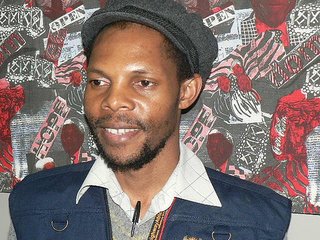 By Tula Dlamini
By Tula DlaminiMy late uncle Ndakandaka Ziqwayi was part of the black African contingent drafted to assist Allied troops during the Second World War. His recollection of the then-Berlin was of a ruined city that bore all the scars of war - buildings and other infrastructure destroyed and massive human casualties, among which more than 160 000 members of the Jewish community were either imprisoned or brutally exterminated.
To this day, parts of Berlin remain a painful reminder of the turbulent past.
Upon arrival, it became clear from the onset that historical relics were a way of illustrating how far modern Berlin had come.
A hint of Berlin's inner city and its tragic past was evident when I visited the Bahnhof Zoologischer Garten, popularly known to tourists as the Zoo Garden. The location resembled a museum in which the old collided with the new. On the one hand, the Zoo Garden comprised the usual big-city bright lights, heavy traffic and modern high-rise buildings, while at its centre stood the Kaiser William Memorial Church, abandoned as a ruin after it was bombed during the Second World War.
Gordon Mclachlan, the author of the Rough Guide to Germany, described this former "house of worship" as a "strangely effective memorial".
My host, Winfried Drathschmidit - then director of advanced professional television training at Sender Fries Berlin, was amongst the moderate voices in Germany arguing for the restoration of historic buildings and promotion of the city's museums. "Without the knowledge of the past, the future is fraught with the same old mistakes that the previous generations made," he argued, adding that he favoured a mixture of both eastern and western architecture as opposed to a total erasure of Berlin's sad past.
Drathschmidit's view seems to have carried the day. Modern architecture is visible in the city, but so are the old buildings under renovation. Some others have not been rebuilt since the war.
Perhaps the most intriguing landmark in recent history is the Berlin Wall. It was built in 1961 following a directive from Walter Ulbricht, the then-East German leader, to physically separate East Berlin from West Berlin.
The army, police and the secret service were instructed to enclose the city with barbed wire barricades and a concrete wall with an average height of 3,6m. Streets were blocked, railway lines broken and all the underground rail stations closed. East Germans were forbidden to travel to the West. Several border crossing points such as Checkpoint Charlie were established to regulate movement.
Civilians who attempted to cross illegally were shot on sight. The Berlin Wall was eventually torn down following a press conference on November 9 1989 in which the East German government announced that travel restrictions for East Germans had been lifted.
"On that night people from East Berlin streamed into the western part of the city in their thousands. For most it was the first time they had seen the other part of their city," recalled Drathschmidit.
Only a few parts of the wall have been preserved as a memorial to this tumultuous past. More than half a million people now cross the border from one part of the city into the other daily.
Former East Berlin residents seek employment in the west without restrictions and patronise its shopping centres, cinemas and nightclubs.
Today Berlin is ranked amongst the most vibrant and geographically expansive urban areas in the European Union. No less than 3,3 million peoplelive in this city that is endowed with parks, forests and lakes.
For the young and mobile, the great thing about Berlin is that the city has no shortage of daytime and evening activities. Often described as "the city that does not sleep", Berlin lives up to this reputation.
There are no official closing hours for nightlife. Pub drinkers consume until they drop, and nightclubs and public transport operate until the small hours of the morning.
I soon hooked up with a vibrant student community in Berlin and before I knew it, I was integrated into a community of young people from Africa, Germany and other parts of Europe.
My first real cultural shock was at the Kit Kat Club in Bessemerstrasse near Templehof. This is one of the most popular clubs that caters for the gay and lesbian scene. Coming from Africa, where discussions about sexual orientation are taboo, and being a self-confessed 100 percent heterosexual, I was initially shocked by the degree of tolerance towards the gay and lesbian community.
The Kit Kat Club was just the beginning of what I was to experience in Berlin. "The Slumberland", located near Kaizerdamm and owned and run by Stella Chiweshe, the Zimbabwean traditional mbira-music maestro, was later to become my favourite bar in Berlin.
I was attracted by its multicultural patronage. This is the one bar in which I was certain to meet someone from South Africa, or neighbouring countries. Young Germans from all walks life also frequented it.
True to the words of Karl Scheffler, author of Berlin: Ein Stadtschicksal: "Berlin is a city that never is, but always in the process of becoming."
The city has become an essential link between eastern and western Europe. Whether by road, sea, or by air, the city has made great progress in terms of the restoration and creation of transportation networks, thus positioning itself to becoming a potential hub for major social, economic and political activity in a united Europe.
This is a radically different reality to the one my uncle saw during the Second World War.

No comments:
Post a Comment